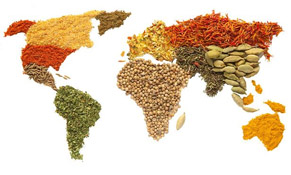Nutrition and Health Sciences, Department of

NUTR/GLST 498b: Global Research Experiences in Nutrition and Health
Date of this Version
4-2021
Document Type
Thesis
Citation
Poster presented for UCARE program, University of Nebraska-Lincoln, Spring 2021
Abstract
Rwanda has one of the highest stunting rates among children globally, and malnutrition remains one of the most pressing public health issues. Lack of diversified diets, due to colonialization and nutrition transition, is the leading cause of the double burden of malnutrition in the country where the progress to reduce undernutrition is slow and obesity rates are rapidly rising. Consumption of indigenous foods has proven to diversify diets, but very few studies have been conducted to assess which ones are available for consumption in Rwanda. The purpose of this study was to assess the availability and use of indigenous foods in Rwanda. All consumables were inventoried in three open-air markets (OAMs) of Kigali, the central province and capital city of the country, from October-December 2020. Consumables were identified by site of origin and the nutritional content was compared. A variety of raw and processed foods and drinks were available in three OAMs inventoried; however, only 24.5% of available species were indigenous to Africa. All of Rwanda’s staples, sweet potatoes, plantains, beans, maize, banana, and cassava, are from other continents and have displaced the native food crops such as cowpea, African cabbage, and pigeon pea. Native food crops were abundant in the pre-colonial period but were not available in any of the markets inventoried. Because the availability of indigenous foods is highly threatened, policies to conserve these delicacies are warranted. Encouraging cultivation of indigenous vegetables and fruits in home gardens will improve accessibility for nutritious and diverse foods in communities, and therefore reduce malnutrition rates across the country.
Included in
International and Community Nutrition Commons, Other Food Science Commons, Public Health Commons

